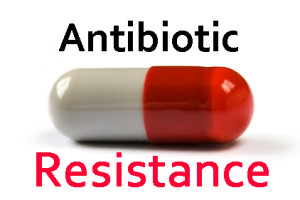Today, I attended the seminar that talked about drug-resistant bacteria and how, if we don’t do something about it soon, we have a big problem on our hands. A problem so big that drug-resistant bacteria could soon become the number cause of deaths by the year 2050. With this knowledge about drug-resistant bacteria, it is understandable why patients and doctors are trying to shy away from the misuse of antibiotics in humans. And not just in humans, but animals as well. An article that I found a few days before the seminar talked about how pediatricians are asking for the decreased use of antibiotics in animals. This is because antibiotics in the animals that humans eat could lead to an even larger immunity to antibiotics. And that is something the world is terrified of. But no one seems to be worried about the consequences we potentially face if we were to alter the way food is currently mass produced to the population. There are a lot of people on this earth to feed and, with the help of antibiotics, animals are able to grow much larger and, therefore, feed even more people. My question is, could the decreased use of antibiotics in animals cause an even bigger problem for humans than drug-resistant bacteria?
I started my research by looking for articles that didn’t agree with the theory that antibiotic-resistant bacteria is passed on to humans by animals. I found that scientists liked to focus on the potentially negative effects antibiotics have when administered to the animals that we eat. Notice how I use the word potentially. While there are many studies such as this one that talk about the potential dangers of giving antibiotics to animals, there are also some studies that are unsure. “Transmission of ARB [antibiotic-resistant bacteria] from animal to human populations is particularly difficult to measure, as it is the product of a very high exposure rate to potential contaminated food, and a very low probability of transmission at any given meal,” (plosmedicine.org). This article actually supports the banning of antibiotics in food animals. But even they had to admit that the amount of antibiotic-resistant bacteria passed on to humans from the animals we eat is unknown. And how are we supposed to know if giving animals antibiotics negatively effects humans if we do not know the amount of antibiotic-resistant bacteria being passed from animals to humans? In fact, who is there to say that any ARB is being passed from animals to humans? This article features a debate between scientists and meat-industry workers. This article prefaces the entire debate by saying that the decrease of antibiotic intake in animals could greatly effect food distribution. Sick animals need antibiotics in order to heal as well. It wouldn’t do anybody any good if people were eating sick animals and then dying or getting sick from it. The decreased use of antibiotics in animals could decrease their growth rate and that means less food to go around. The price of meat would consequently skyrocket. Also, meat industry workers are not very public with their antibiotic distribution techniques in their animals. That means that scientists have no legitimate numerical data to support their theory that antibiotic use in animals is creating ARB’s in humans. This article talks about how the resistance problem everyone is so worried about is mostly passed from human to human and the bacteria naturally found in animals is removed when adequately cooked. There is little to no concrete evidence that supports the argument that the passing of ARB’s is from animal to human.
I think that more experiments need to be conducted before scientists decide that antibiotics should no longer be given to animals. The experiment should be a randomized control trial of sick people. These sick people will have received no prior antibiotics to treat their current illness. The control group will eat meat known to have been treated with antibiotics and the other group will not eat meats known to have been treated with antibiotics. Both groups will be administered antibiotics at the same time. After a certain amount of time, the data will be compared and we will be able to see if the consumption of antibiotic-fed animals increases the likelihood of the participants not responding to the antibiotics they were initially given. I understand that this experimental design is not very thought through and could probably be done better, but the main idea is understood. We need more experiments to test the theory that antibiotic-fed animals pass on antibiotic-resistant bacteria to the people eating them. Or, scientists could do some digging with meat industry workers and find out if there is any antibiotic-resistant bacteria actually being passed on at all. Whatever experiment is conducted, there needs to be a wide range of different demographics so that we can see if the consumption of antibiotic-fed animals effects different kinds of people differently.
At this point in time, there is not enough evidence to get rid of the practice of feeding animals antibiotics. Maybe later on down the line, there will be a practice initiated in the meat industry that keeps animals big and able to feed many without there being a question of health safety. But, for now, the answer to my question is no. The decreased use of antibiotics in animals is not a bigger problem than drug resistant bacteria. And, if it is, we have no concrete evidence to support that theory. As of right now, drug-resistant bacteria is the most dangerous thing on the horizon for humans. And we need to come up with ways to decrease the chances of this dangerous thing happening. I just don’t know if the ways of decreasing this danger lies in the halt of giving animals antibiotics.




